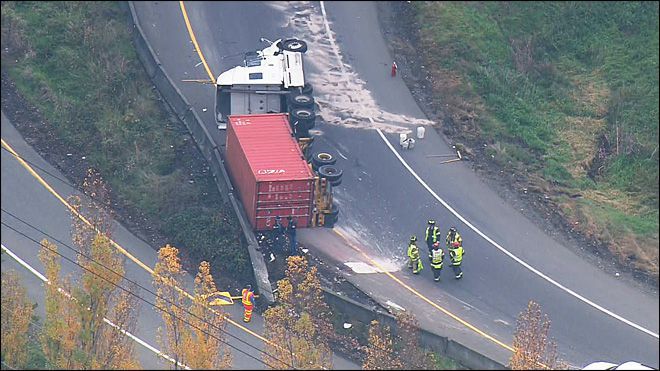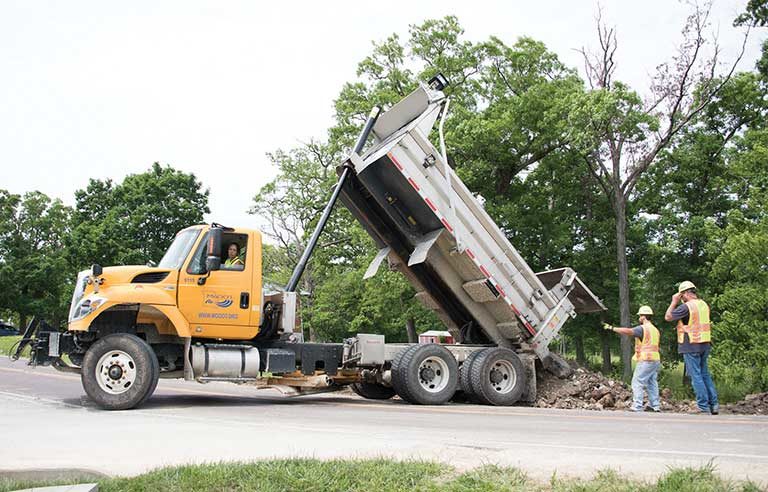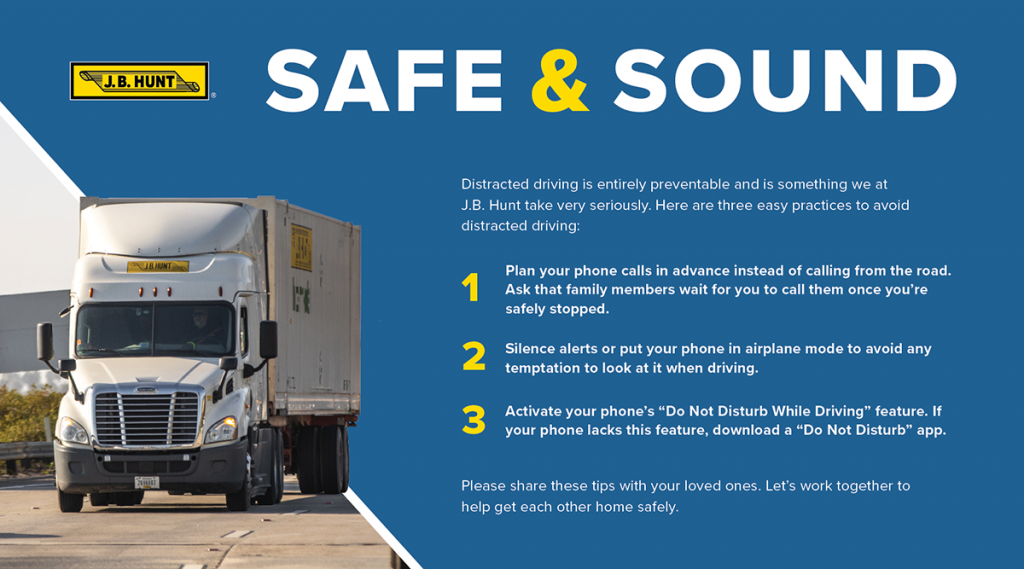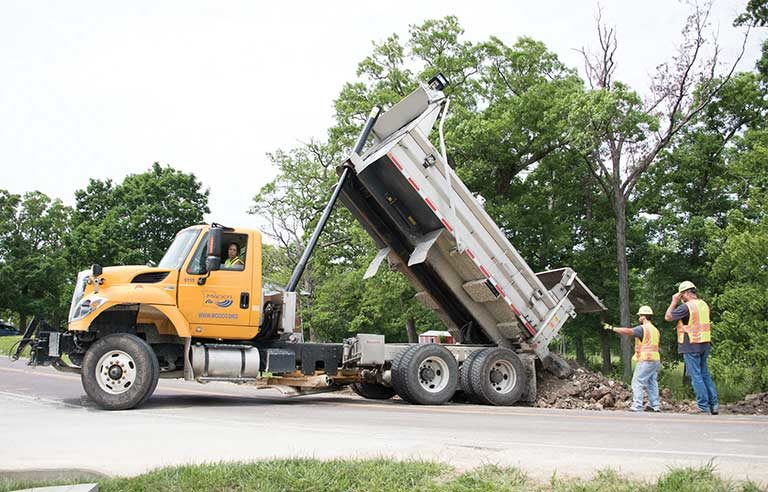Truck tipping is a grave concern within the transportation industry, as it not only poses significant safety hazards but also leads to financial losses for companies. In this article, we will analyze the factors that contribute to truck tipping incidents, evaluate the consequences of such accidents, and explore preventative measures that can be taken to minimize the likelihood of tipping. By identifying the key factors and adopting proactive strategies, you can effectively mitigate the risk of truck tipping and ensure the smooth and secure transportation of goods.
Factors Affecting Truck Stability
Center of Gravity
The center of gravity plays a critical role in determining the stability of a truck. It refers to the point at which the truck’s weight is evenly distributed in all directions. Trucks with a higher center of gravity are more prone to tipping over, as they have a higher likelihood of losing balance. It is essential to have a low center of gravity for optimal stability and safe maneuverability.
Load Distribution
The way the load is distributed within the truck also affects its stability. If the cargo is not evenly distributed, it can shift during transit, leading to an imbalance and potential tipping. Proper load distribution ensures that the weight is evenly spread across the truck, minimizing the chances of instability.
Road Conditions
Road conditions have a direct impact on truck stability. Unpredictable and uneven surfaces can disturb the balance of the truck, making it more vulnerable to tipping. Factors such as potholes, uneven terrain, and road deterioration can affect the stability of a truck and require cautious driving to maintain control.
Weather Conditions
Weather conditions, such as rain, snow, and strong winds, can significantly impact truck stability. Slippery surfaces caused by rain and snow reduce the traction between the tires and the road, increasing the likelihood of skidding and tipping. Additionally, strong winds can affect the stability of the truck, especially when combined with a high center of gravity or improperly distributed cargo.
Truck Stability Enhancements
Electronic Stability Control
One of the major advancements in truck stability technology is Electronic Stability Control (ESC). ESC is a computerized system that monitors the truck’s movement and automatically adjusts the brakes and engine power to maintain stability. It can detect and correct skidding or loss of control, thereby greatly enhancing the overall stability of the truck.
Anti-lock Braking System
The Anti-lock Braking System (ABS) is another crucial enhancement that contributes to truck stability. ABS prevents the wheels from locking up during braking, allowing the driver to maintain control and steer the truck even under emergency braking situations. By preventing wheel lock-up, ABS helps to prevent skidding or tipping due to loss of control during sudden braking.
Auxiliary Brake System
Trucks often carry heavy loads, which can put significant strain on the braking system. An auxiliary brake system, such as an engine brake or a retarder, can assist in maintaining truck stability by providing additional braking power. These systems help to slow down the truck without relying solely on the foot brake, reducing the risk of overheating and brake failure.
This image is property of qph.cf2.quoracdn.net.
Types of Trucks and their Stability
Heavy-Duty Trucks
Heavy-duty trucks, commonly used for hauling large or heavy loads, require special attention to stability. Due to their size and weight capacity, heavy-duty trucks have a higher center of gravity, which makes them more susceptible to tipping. Proper load distribution and careful driving techniques are crucial to maintaining stability and preventing accidents.
Semi-Trucks
Semi-trucks, also known as tractor-trailers or 18-wheelers, are a common sight on highways and play a vital role in the transportation industry. With their long trailers and significant weight distribution, semi-trucks face unique stability challenges. Proper load distribution, especially balancing the weight between the tractor and the trailer, is critical for ensuring stability and preventing tipping.
Dump Trucks
Dump trucks are designed to transport loose materials and unload them by tilting the bed. However, the nature of their work makes them more prone to instability, especially when the load is unevenly distributed or improperly secured. Dump truck operators must pay close attention to load placement and be cautious when operating on uneven or slippery terrain to maintain stability.
Flatbed Trucks
Flatbed trucks are widely used for transporting various types of cargo that cannot be accommodated in enclosed trailers. However, their open design poses stability challenges, as the load is exposed to wind forces, making the truck more susceptible to tipping. Proper load distribution and securement techniques are essential for maintaining stability and preventing accidents.
Common Causes of Truck Tipping
Overloaded Cargo
When trucks are loaded beyond their weight capacity, the risk of tipping significantly increases. Overloaded cargo raises the center of gravity, making the truck more unstable and prone to tipping even during routine maneuvers. It is crucial to adhere to load limits and ensure that the cargo is properly distributed to maintain stability.
Unbalanced Load
If the load within the truck is not distributed evenly, it can create an unbalanced condition that compromises stability. Uneven weight distribution can cause the truck to tilt to one side, making it more susceptible to tipping. Proper load distribution, with careful attention to weight placement, is essential to maintain balance and stability.
Sharp Turns at High Speeds
Taking sharp turns at high speeds can be extremely dangerous and increases the chances of truck tipping. The centrifugal force generated during a sharp turn can cause the truck to lean to one side, potentially leading to a loss of control and tipping. It is crucial to slow down and take turns cautiously to maintain stability and prevent accidents.
Tire Blowouts
A tire blowout can have catastrophic consequences for a truck’s stability. When a tire suddenly bursts or loses air pressure, it can cause the truck to swerve or tilt, significantly affecting stability. Regular tire maintenance, including proper inflation, tread depth checks, and timely replacements, is essential to minimize the risk of tire blowouts and maintain stability.
Sudden Lane Changes
Abrupt lane changes without proper signaling or caution can disrupt the stability of a truck. When changing lanes suddenly, the weight distribution within the truck can shift, impacting its balance and potentially leading to tipping. It is important to use proper signaling, check blind spots, and execute lane changes smoothly and gradually to maintain stability.

This image is property of images.fosterwebmarketing.com.
Impact of Center of Gravity on Truck Stability
Definition and Importance
The center of gravity is the point at which the truck’s weight is evenly distributed in all directions, signifying its balance. Understanding and managing the center of gravity is crucial for truck stability, as a higher center of gravity increases the risk of tipping. It is essential to maintain a low center of gravity to ensure safe and stable operation.
Factors Affecting Center of Gravity
Several factors affect the center of gravity of a truck. The design and structure of the truck, including its height, weight, and load capacity, significantly impact the center of gravity. Additionally, the distribution and placement of the load within the truck can alter the center of gravity. It is essential to consider these factors and make necessary adjustments to maintain optimal stability.
Load Placement and its Effects
The placement of the load within the truck has a direct impact on its center of gravity and stability. Placing the load too high or towards one side of the truck increases the center of gravity, making it more prone to tipping. Proper load placement, with the majority of the weight at the bottom and evenly distributed, enhances stability and minimizes the risk of accidents.
Importance of Load Distribution for Truck Stability
Ideal Load Distribution
Achieving an ideal load distribution is crucial for maintaining truck stability. Ideally, the load should be evenly distributed, both vertically and horizontally, to ensure balanced weight distribution. Placing a significant portion of the load towards the front or back of the truck can lead to instability and increase the risk of tipping.
Effects of Uneven Load Distribution
When the load within a truck is unevenly distributed, it can create an imbalance that compromises stability. Uneven weight distribution can cause the truck to tilt to one side, making it more susceptible to tipping during turns or sudden maneuvers. Moreover, an uneven load distribution can exert additional pressure on certain tires, leading to tire wear, decreased traction, and further stability issues.
Techniques to Ensure Proper Distribution
To ensure proper load distribution, several techniques can be employed. Using load bars or straps to secure the load and prevent shifting is essential. Additionally, placing heavier items closer to the truck’s center, along with evenly distributing the weight along the length of the truck, helps maintain stability. Regular checks and adjustments should be made during transit to counter any shifts in load distribution and maintain optimal stability.

This image is property of www.safetyandhealthmagazine.com.
Effects of Road Conditions on Truck Stability
Uneven Terrain
Uneven terrain poses a significant challenge to truck stability. Potholes, bumps, and uneven surfaces can cause the truck to lose balance, leading to instability and potential tipping. It is crucial to drive cautiously on uneven terrain, adjusting speed, and maintaining control to minimize the risk of accidents.
Curves and Intersections
Curves and intersections require careful maneuvering to maintain truck stability. Taking curves or turning at intersections too quickly can cause the truck to lean to one side, increasing the risk of tipping. It is important to adjust speed, use proper signaling, and execute turns smoothly to minimize the chances of instability in such situations.
Potholes and Road Deterioration
Potholes and road deterioration can significantly affect truck stability. Hitting a pothole or navigating through a road with significant deterioration can cause the truck to lose balance, especially if the load distribution is already compromised. Focusing on the road ahead, slowing down when necessary, and choosing alternative routes if possible can help minimize the impact of these road conditions on truck stability.
How Weather Conditions Affect Truck Stability
Rain and Wet Surfaces
Rain and wet surfaces can greatly impact truck stability. The reduced traction between the tires and the road surface increases the chances of skidding and loss of control. It is crucial to reduce speed, maintain a safe distance from other vehicles, and use anti-lock brakes to prevent wheel lock-up when driving on wet surfaces.
Snow and Ice
Driving a truck in snow and icy conditions presents significant stability challenges. These conditions reduce tire grip and increase the risk of skidding and sliding. Proper snow tires or chains, reduced speed, and cautious braking and acceleration are essential for maintaining stability and preventing accidents.
Strong Winds
Strong winds can have a significant impact on truck stability, especially for high-profile vehicles. Crosswinds can cause the truck to sway, affecting stability and control. Drivers must exercise caution during windy conditions, reducing speed and maintaining a firm grip on the steering wheel to counter the effects of strong winds.
This image is property of qph.cf2.quoracdn.net.
Benefits of Electronic Stability Control for Trucks
How ESC Works
Electronic Stability Control (ESC) is a sophisticated technology that helps improve truck stability. ESC continuously monitors various sensors and detects any loss of control or instability. If a potential instability is detected, ESC automatically applies individual wheel brakes and modulates engine power to assist the driver in maintaining stability and control.
Improved Handling and Control
ESC significantly improves handling and control of trucks, especially in challenging situations. By automatically adjusting brakes and engine power, ESC helps to counteract oversteering, understeering, and skidding, providing the driver with enhanced stability. This technology enables drivers to navigate curves, maneuver sharp turns, and respond to sudden changes in road conditions more effectively, reducing the risk of accidents.
Reduced Rollover Risk
One of the key benefits of ESC is its ability to reduce the risk of truck rollovers. By continuously monitoring the truck’s stability and making necessary adjustments, ESC helps prevent dangerous situations where the truck’s balance is compromised, leading to tipping. This technology plays a crucial role in preventing rollovers, which can have catastrophic consequences for both the driver and other road users.
Tips to Prevent Truck Tipping
Proper Load Limits and Distribution
Adhering to proper load limits and distribution is essential to prevent truck tipping. It is crucial to know and respect the truck’s weight capacity, adhering to legal limits and ensuring the load is evenly distributed. Regular checks should be conducted to verify load security and make necessary adjustments to maintain stability.
Regular Vehicle Maintenance
Proper vehicle maintenance is crucial for optimal truck stability. Regular inspections, including tire checks, brake inspections, and suspension maintenance, play a significant role in identifying potential issues that could compromise stability. Regular servicing and repairs should be conducted promptly to address any concerns and maintain safe operation.
Safe Driving Practices
Safe driving practices are instrumental in preventing truck tipping. Drivers should adhere to speed limits, adjust speed when encountering challenging road conditions, and avoid abrupt maneuvers. Smooth acceleration, gentle braking, and controlled steering contribute to overall stability and minimize the risk of accidents.
In conclusion, truck stability is influenced by various factors, including center of gravity, load distribution, road conditions, and weather conditions. Understanding these factors and implementing stability enhancements, such as electronic stability control and anti-lock braking systems, can significantly improve truck stability. Proper load distribution, cautious driving practices, and regular maintenance also play crucial roles in preventing truck tipping. By considering these factors and implementing appropriate measures, truck operators can promote safer and more stable operations, minimizing the risk of accidents and ensuring the well-being of both drivers and other road users.

This image is property of drivers.jbhunt.com.
